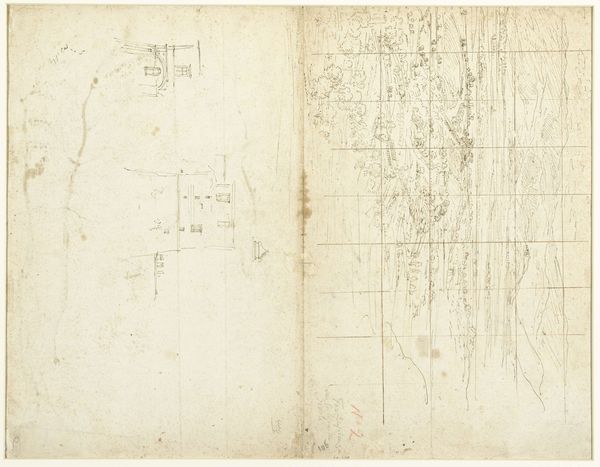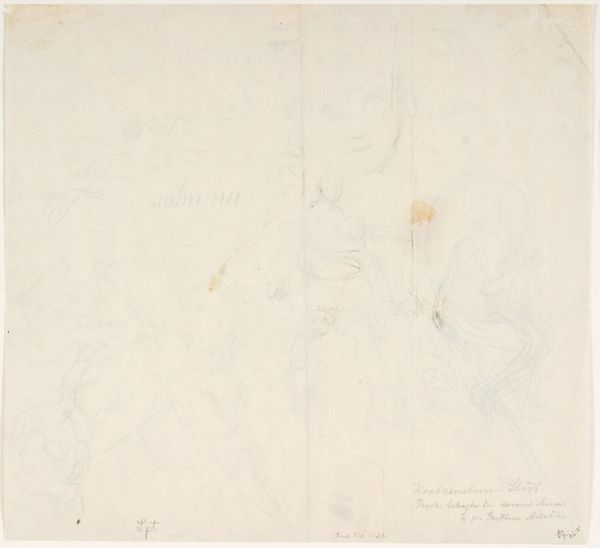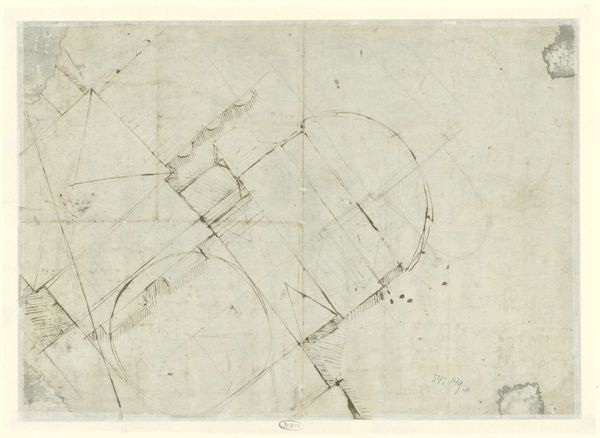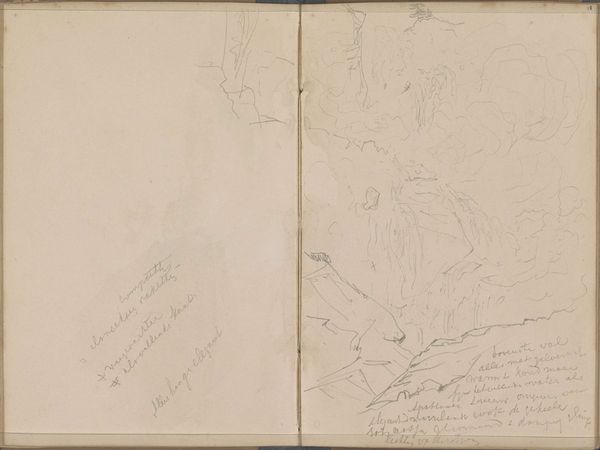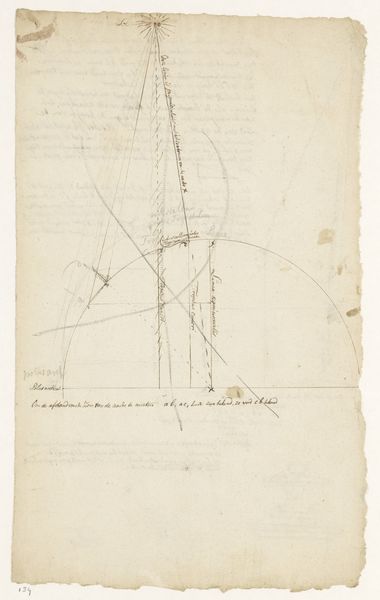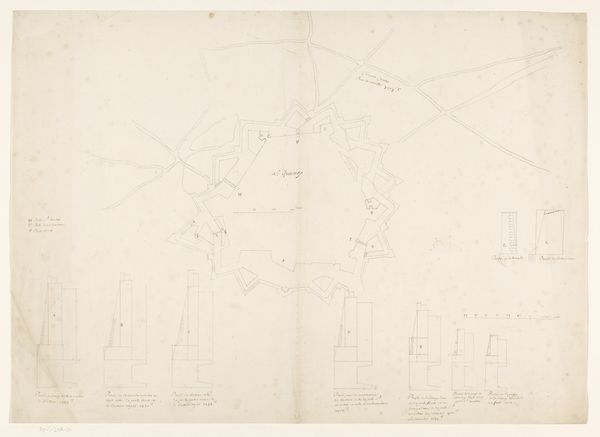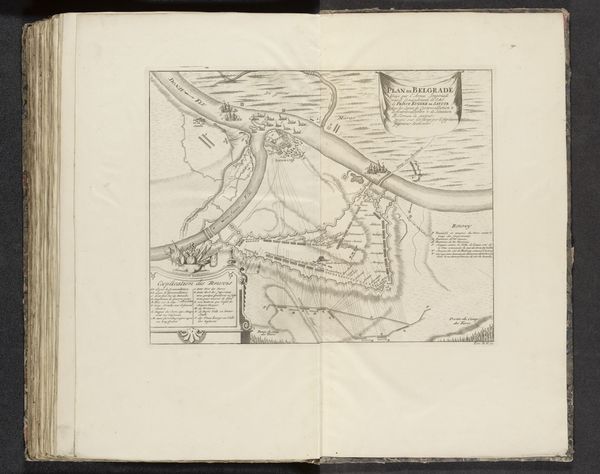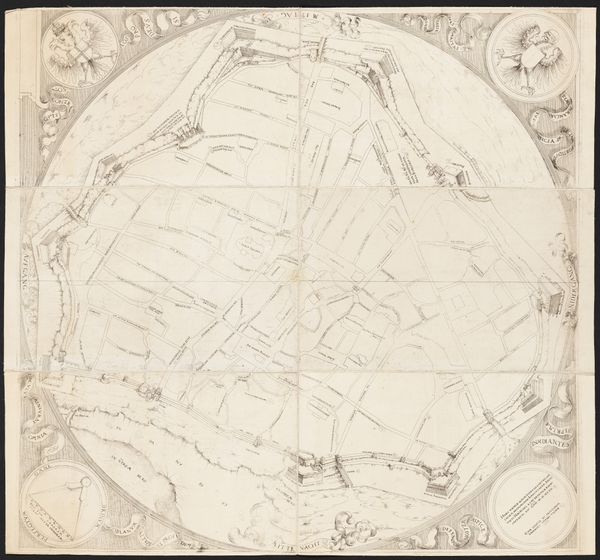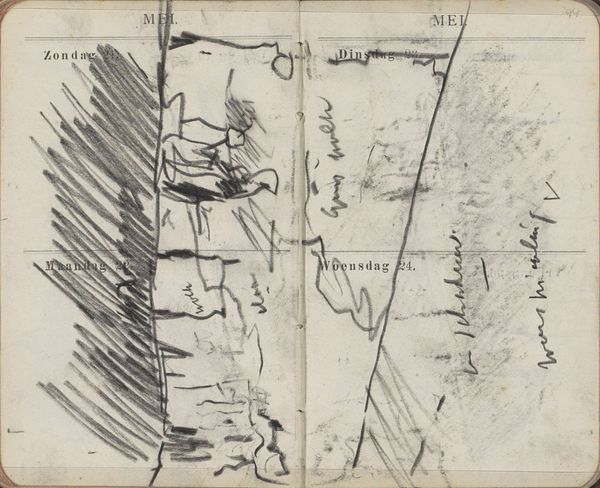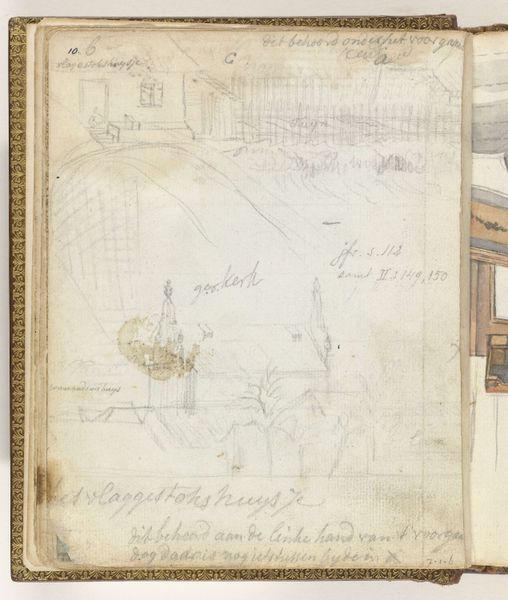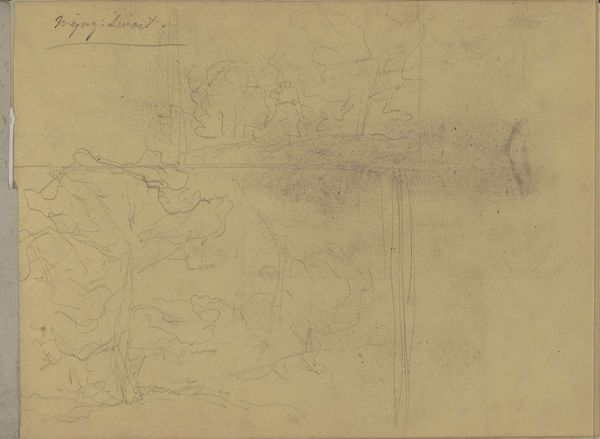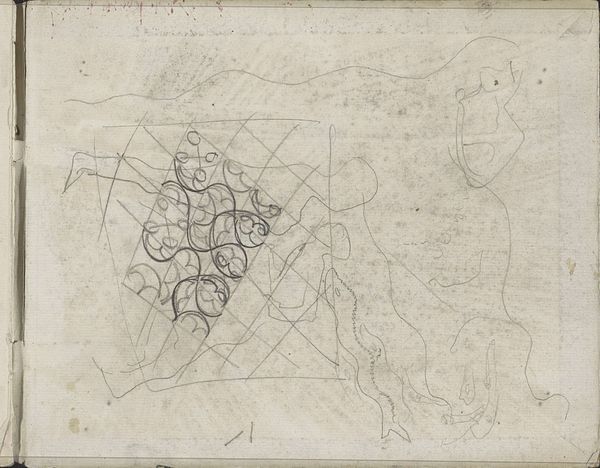
drawing, paper, pencil
#
drawing
#
aged paper
#
toned paper
#
light pencil work
#
hand drawn type
#
paper
#
personal sketchbook
#
ink drawing experimentation
#
fading type
#
geometric
#
pencil
#
ink colored
#
abstraction
#
sketchbook drawing
#
academic-art
#
sketchbook art
Dimensions: height 325 mm, width 370 mm
Copyright: Rijks Museum: Open Domain
Curator: Here we have "Kladpapier met wiskunde en schetsjes," or "Waste paper with mathematics and sketches," created between 1787 and 1808 by Jan Brandes. What strikes you first about this fascinating glimpse into a creative mind? Editor: Well, beyond the faded tones of the paper, it’s this incredible layering, almost like archaeology on a page. The hand drawn type overlays geometric sketches—it's a real window into a process. Curator: Absolutely. Brandes, with his academic style, gives us a look at how the practical and the intellectual intertwined. This isn’t just mathematics; there’s also abstraction at play, wouldn’t you say? Editor: Definitely. The worn paper adds a dimension too. Think about the labor of papermaking in that era. It makes you consider who had access to materials like this. It was a valuable surface on which to draft and draw. This drawing exemplifies not only skill, but a level of economic privilege. Curator: And it makes me think about how artists today collect and value particular types of paper... Paper can have so much personal and aesthetic value for some artists. Editor: Indeed! You almost get the sense, observing Brandes's "Waste paper" sketchbook pages, that the divisions between art, math and science were blurred; they were all interconnected ways of seeing the world. The labor is embedded here – of crafting an image, of creating knowledge. Curator: The aging only heightens that, the fading ink adding to the work’s ethereal, intimate quality. I see the geometry blending into botanical studies! Editor: True. Brandes turns this ordinary surface into an experimental field where high and low arts merge. Looking at the paper itself allows me to ponder not only this individual's ideas but also what kind of world afforded them time to ruminate over these abstractions. Curator: It makes you want to spend an afternoon just pouring over its details, doesn't it? It makes me want to learn more about the materiality and value assigned to art materials! Editor: It does! A wonderful chance to remember to consider the entire environment surrounding artistic practice and art making.
Comments
No comments
Be the first to comment and join the conversation on the ultimate creative platform.
